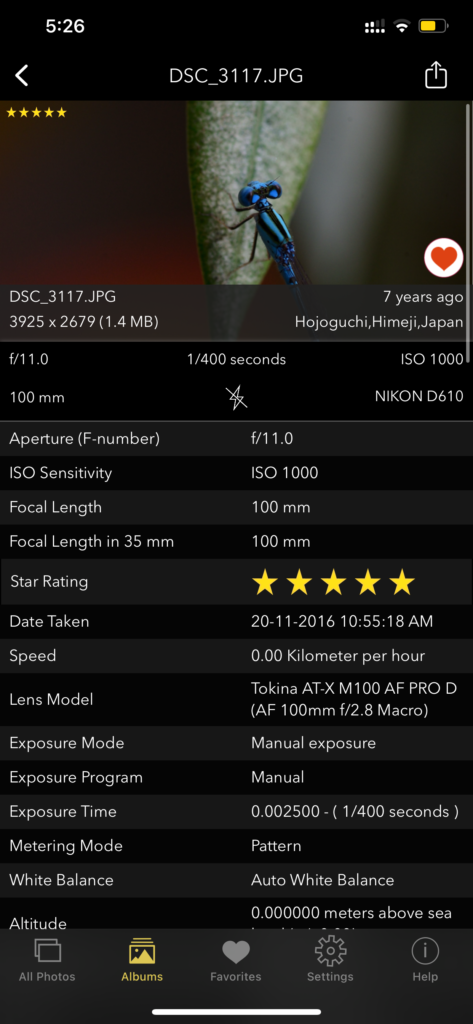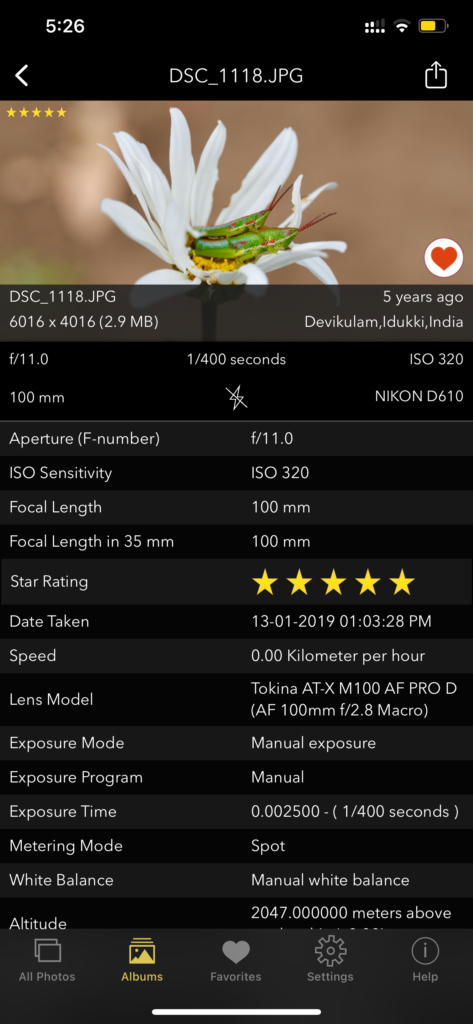Exposure is one of the most critical aspects of photography. It determines how light or dark your photos appear, and getting it right can be challenging, especially in tricky lighting conditions. If you’ve ever asked, “Why are my photos overexposed or underexposed?” or “How can I correct exposure in my photos?”, this SEO-rich guide is here to help. We’ll dive into the causes of exposure problems and provide practical tips and techniques to achieve perfectly exposed images every time.
Understanding Exposure: The Basics
Before we get into troubleshooting, it’s essential to understand what exposure is. Exposure refers to the amount of light that reaches your camera’s sensor or film. It is controlled by three main settings, often referred to as the Exposure Triangle:
- Aperture: The size of the lens opening. A larger aperture (lower f-stop number) allows more light to hit the sensor, which can lead to overexposure if not balanced correctly.
- Shutter Speed: The amount of time the camera’s sensor is exposed to light. A slower shutter speed allows more light, while a faster shutter speed reduces light, potentially leading to underexposure.
- ISO: The sensitivity of your camera’s sensor to light. A higher ISO increases sensitivity, making your photos brighter, but can also introduce noise.


Screenshot of Exif Viewer by Fluntro App – view, edit and remove Exif data
Now, let’s explore common exposure problems and how to fix them.
Common Causes of Overexposure and Underexposure
- Overexposure: Occurs when too much light hits the camera sensor, resulting in photos that are too bright, with washed-out highlights and loss of detail in the bright areas.
- Underexposure: Happens when too little light reaches the sensor, leading to dark photos where details in the shadows are lost.
1. How to Correct Overexposure
If your photos are consistently too bright, here are some steps you can take to correct overexposure:
A. Adjust Your Aperture
- Use a smaller aperture (higher f-stop number). This reduces the amount of light entering the lens, helping to avoid overexposure.
- Tip: If you’re shooting in bright conditions, such as midday sunlight, consider using an aperture of f/8 or higher to manage light better.
B. Increase Shutter Speed
- A faster shutter speed reduces the amount of light that hits the sensor, which can help correct overexposure.
- Tip: Try using a shutter speed of 1/500s or faster when shooting in bright light.
C. Lower Your ISO
- Reducing your ISO setting can help control the brightness of your photos. Use the lowest possible ISO (e.g., ISO 100) to minimize overexposure.
- Tip: In well-lit environments, always start with a low ISO and adjust as needed.
D. Use Exposure Compensation
- Most cameras have an Exposure Compensation feature that allows you to adjust the exposure level without changing other settings. Lowering the exposure compensation can help reduce overexposure.
- Tip: Experiment with setting exposure compensation to -1 or -2 in bright conditions.
E. Use a Neutral Density (ND) Filter
- An ND filter reduces the amount of light entering the lens without affecting the colors of your image. This is particularly useful in very bright conditions where you want to use a wider aperture or slower shutter speed.
- Tip: ND filters are essential for landscape photography, especially when shooting near water or other reflective surfaces.
2. How to Correct Underexposure
Underexposure leads to dark images that lack detail in the shadows. Here’s how to fix underexposure:
A. Open Up the Aperture
- A wider aperture (lower f-stop number) allows more light to hit the sensor, which can help correct underexposure.
- Tip: In low-light conditions, consider using an aperture of f/2.8 or lower to maximize light intake.
B. Slow Down the Shutter Speed
- A slower shutter speed increases the exposure time, allowing more light to reach the sensor. This is particularly useful for night photography or indoor settings.
- Tip: Use a tripod when slowing down the shutter speed to avoid camera shake and ensure sharp images.
C. Increase Your ISO
- Raising your ISO makes your camera’s sensor more sensitive to light, helping to brighten underexposed photos. However, be mindful of noise, especially at higher ISO levels.
- Tip: Experiment with ISO settings between 400 and 1600 depending on the lighting conditions, but avoid going too high unless absolutely necessary.
D. Use Exposure Compensation
- If your photos are too dark, increase the exposure compensation to +1 or +2. This adjusts the exposure level without altering your aperture, shutter speed, or ISO settings significantly.
- Tip: This feature is handy when shooting in environments with variable lighting, such as a forest with dappled sunlight.
3. Post-Processing Tips to Fix Exposure Problems
Sometimes, despite your best efforts, you may need to correct exposure during post-processing. Here’s how:
A. Use Histogram
- The histogram in editing software like Adobe Lightroom or Photoshop shows the tonal range of your image. A balanced histogram should have peaks that are neither too far to the left (underexposed) nor too far to the right (overexposed).
- Tip: Adjust the exposure slider in Lightroom until your histogram is more balanced.
B. Adjust Highlights and Shadows
- Use the highlights and shadows sliders to recover lost details in overexposed and underexposed areas. Reducing highlights can bring back details in bright areas, while lifting shadows can reveal hidden details in darker areas.
- Tip: Be careful not to overdo it, as extreme adjustments can lead to unnatural-looking images.
C. Curves Adjustment
- The Curves tool allows for precise control over the brightness and contrast of your image. By adjusting the curve, you can fine-tune the exposure and contrast.
- Tip: Create an S-curve to add contrast while balancing exposure, making sure to preserve detail in both highlights and shadows.
4. Bonus Tips for Managing Exposure
- Use Bracketing: Exposure bracketing involves taking multiple shots at different exposure levels. This is particularly useful in high-contrast scenes, as it allows you to choose the best-exposed image later or merge them for HDR photography.
- Shoot in RAW: RAW files retain more information than JPEGs, giving you greater flexibility in correcting exposure during post-processing.
- Use Spot Metering: In challenging lighting situations, switch to spot metering mode to get an accurate exposure reading from a specific part of your scene, such as a person’s face in a backlit portrait.
Understanding and managing exposure is essential for capturing beautiful, well-lit photos. By mastering the basics of the exposure triangle and using the tips outlined in this guide, you can overcome common exposure problems and enhance your photography skills. Whether you’re dealing with overexposed highlights or underexposed shadows, these strategies will help you achieve perfectly exposed images every time.
LEARN MORE ABOUT FLUNTRO APPS FOR PHOTOGRAPHERS
1. EXIF VIEWER BY FLUNTRO
VIEW, EDIT, REMOVE EXIF METADATA FOR PRIVACY
Knowing whether an app contacts external servers is equally important. It helps you understand where your data is going, who might have access to it, and how it affects your device’s performance and security. By regularly checking your app privacy reports, especially on iOS, you can stay informed about these connections and take action to protect your data.
By being proactive about your digital privacy, you can navigate the online world with confidence, ensuring your personal information stays safe and secure.
Appstore link :- https://apps.apple.com/us/app/exif-viewer-by-fluntro/id944118456

EXIF metadata is an invaluable resource for photographers at all skill levels. It provides insights into your photography, helps you troubleshoot issues, and offers a means of proving authorship and copyright. So, the next time you capture that breathtaking shot, don’t forget to delve into the EXIF metadata – it’s a treasure trove of information waiting to be explored, and it might just be the key to unlocking your photography potential.
2. PHOTOS SEARCH BY FLUNTRO
YOUR ULTIMATE PHOTO DISCOVERY COMPANION!
Photos Search app takes image searching to a whole new level by allowing you to search for text within photos effortlessly. Unleash the potential of your visual content and discover a seamless way to find and organize your images based on the words they contain. Whether you’re a professional photographer, an art enthusiast, or simply someone who loves exploring beautiful imagery, PhotoSearch is here to make your search for photos a delightful and hassle-free experience.
AppStore Link: https://apps.apple.com/app/photos-search-by-fluntro/id6471649312

Get two apps by Fluntro Team :Exclusive Bundle Offer

“Exif Viewer” for $2.99 and “Photos Search” for $4.99
Just for $5.99 instead of $7.98

3. KIANA
CUTE ELEPHANT STICKERS FOR IMESSAGE AND IOS
Express yourself with Kiana the Elephant’s adorable sticker collection!
With 66 charming stickers, there’s a cute expression for every mood. From daily chats to special moments, Kiana add joy and whimsy to your conversations. Share laughter, love, and fun with friends and family through these delightful illustrations. Explore a world of playful expressions, featuring Kiana in a variety of charming poses. Spice up your messages with Kiana: Adorable cute elephant stickers today!
Appstore link :- https://apps.apple.com/us/app/kiana-cute-elephant-stickers/id6504343965

Pingback: Understanding EXIF tags and fields - EXIF Viewer by Fluntro